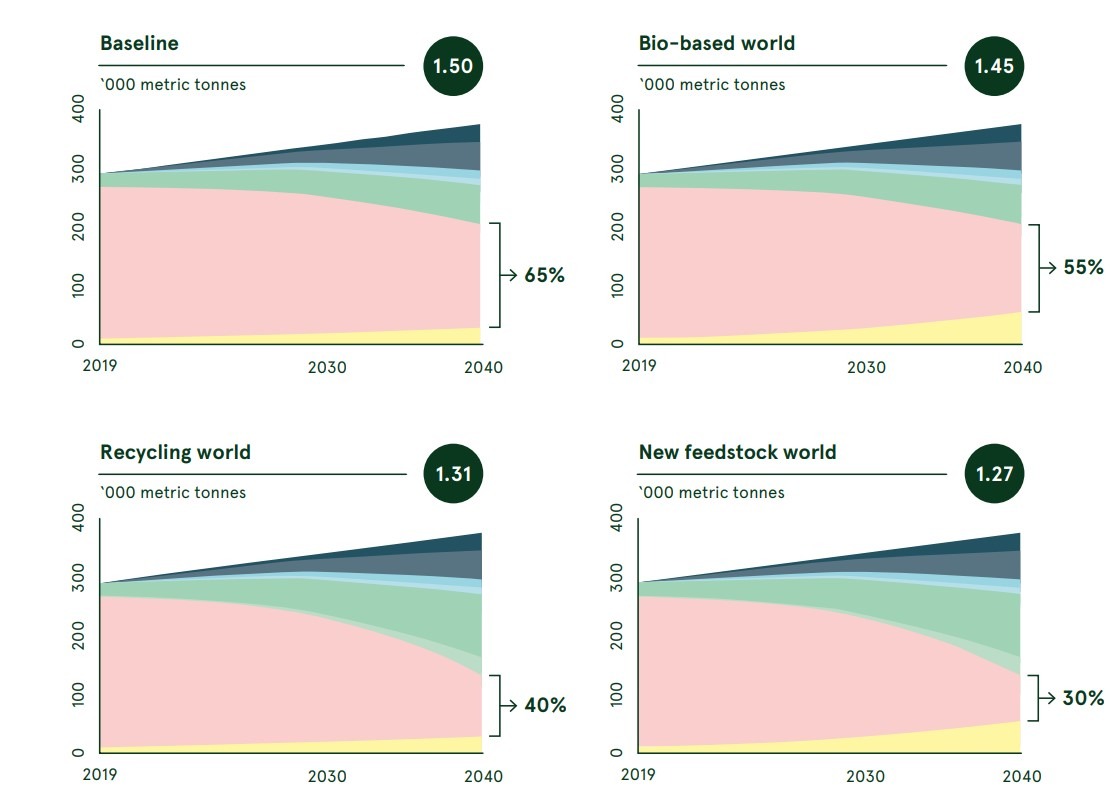Reduce plastic consumption to avoid over 20% of projected plastic waste generation by 2040
An increased focus on reduction strategies is necessary to limit the growth of plastic consumption over the next 20 years. In a Business-As-Usual scenario, plastic consumption in Norway could grow from 289,000 tonnes in 2019 to 376,000 tonnes in 2040, increasing pressure on our waste management systems, climate and ecosystems, both in Norway and beyond. Limiting the growth of avoidable plastic consumption is feasible if it provides society with the most attractive alternative solution from environmental, economic, and social perspectives. Reduction offers net savings to society by cutting the need for waste management and provides the highest mitigation opportunity in GHG emissions compared to any other lever. But it requires consolidated action, mostly from consumer goods companies and retailers, to ensure that, (1) avoidable plastic is systematically eliminated at source and, (2) new delivery models (including reuse systems) are developed and deployed at scale.
To calculate the reduction potential in Norway, we applied the peer-reviewed framework developed in “Breaking the Plastic Wave”, which scores dozens of known solutions for each plastic application based on four dimensions: performance, technology, affordability and convenience. The full details of this assessment can be seen in the technical report. Our analysis found that up to 31,000 tonnes of plastic waste (8%) – mostly packaging – can be eliminated at source while 49,000 tonnes (13%) can be reduced through new delivery models – without reducing utility to consumers. Flexible packaging – especially carrier bags and films (both post-consumer and B2B) – are the applications with the largest reduction potential (48,000 tonnes), followed by rigid packaging (14,000 tonnes including mostly pots, tubs and trays) and beverage bottles (13,000 tonnes). On a per capita basis, this system intervention reflects a reduction from 65 kg (under Business-As-Usual) to 51 kg of plastic per person per year by 2040 (compared to 54 kg today). For more information on this analysis and the relevant assumptions, please consult the technical report.



